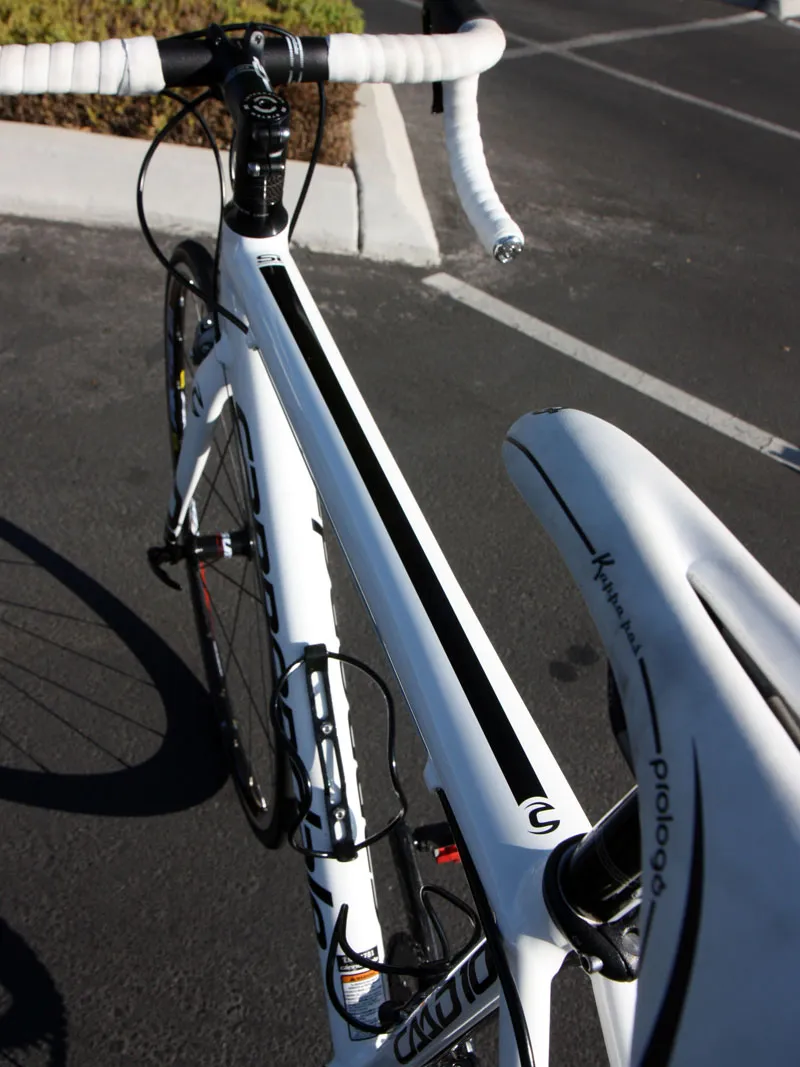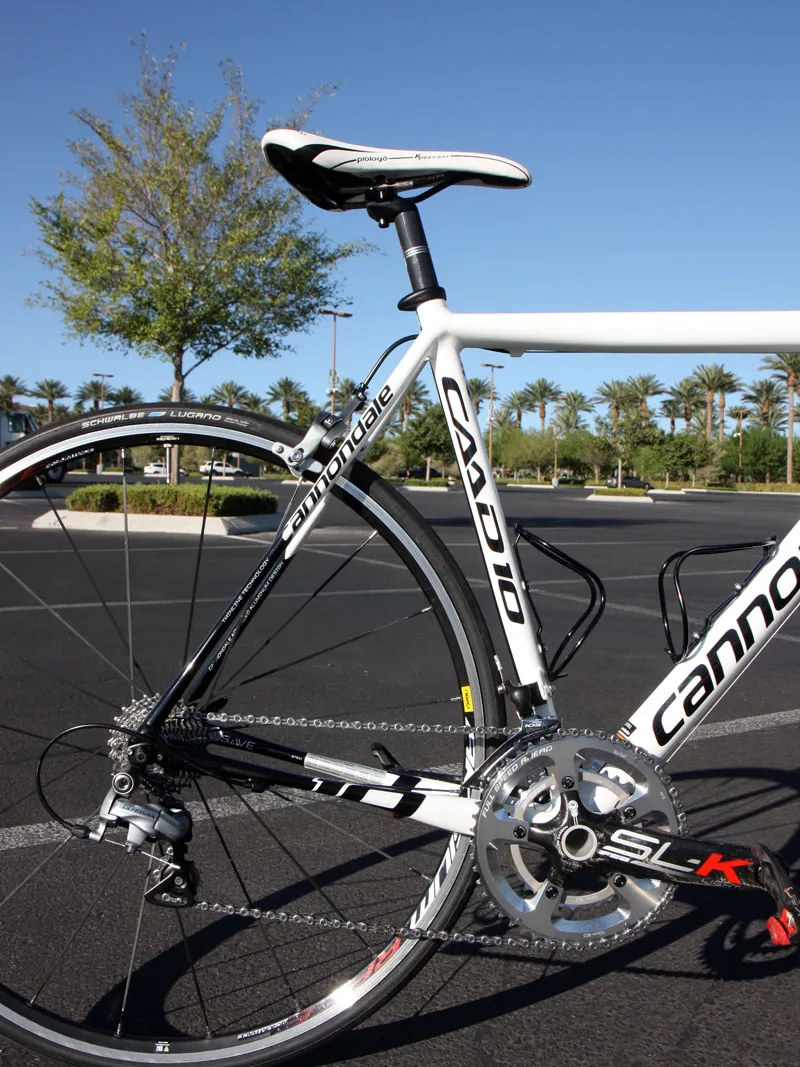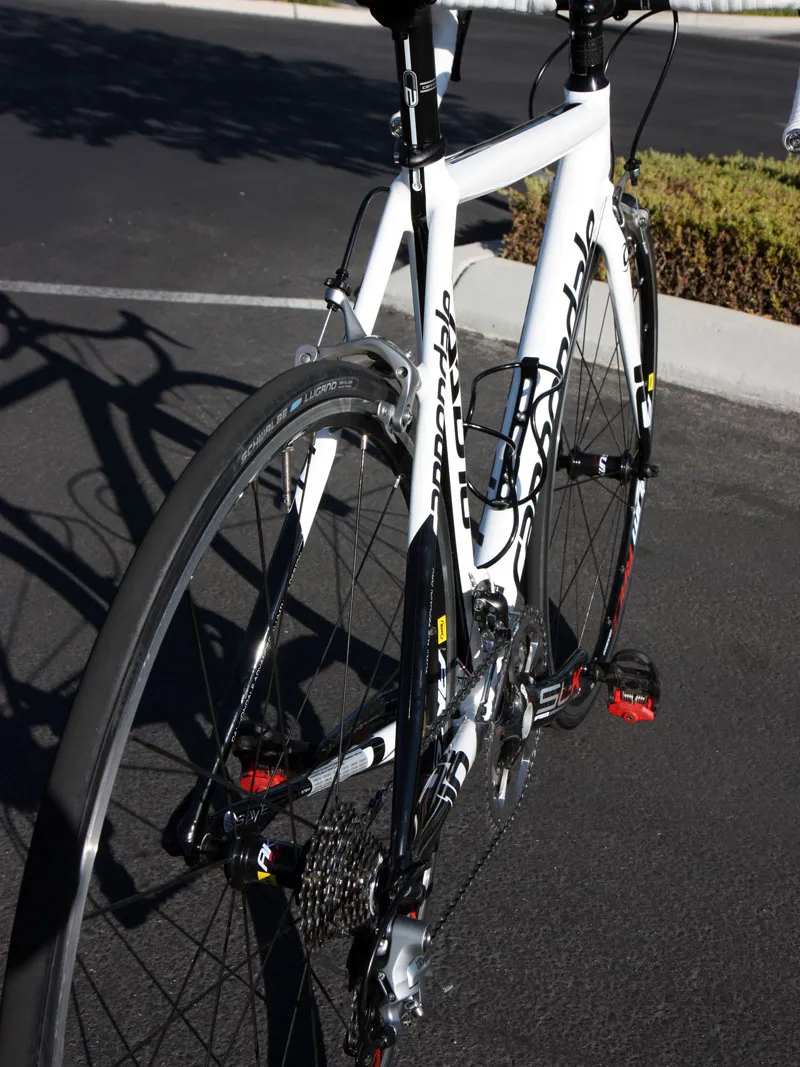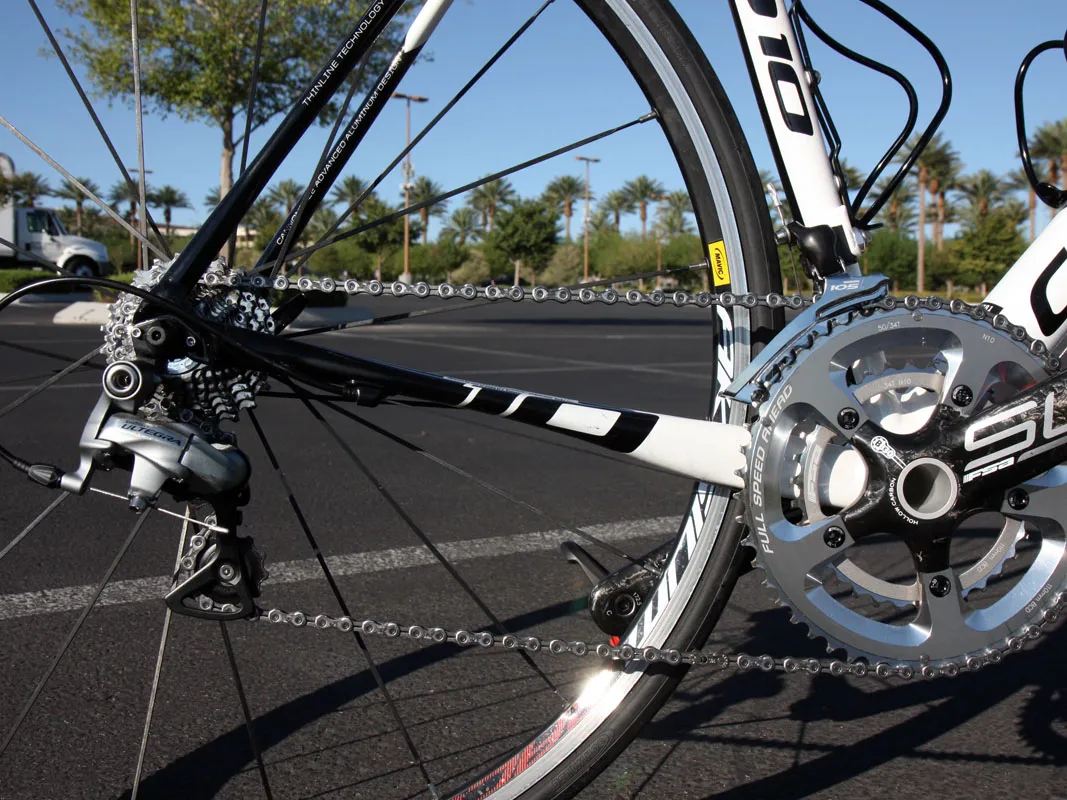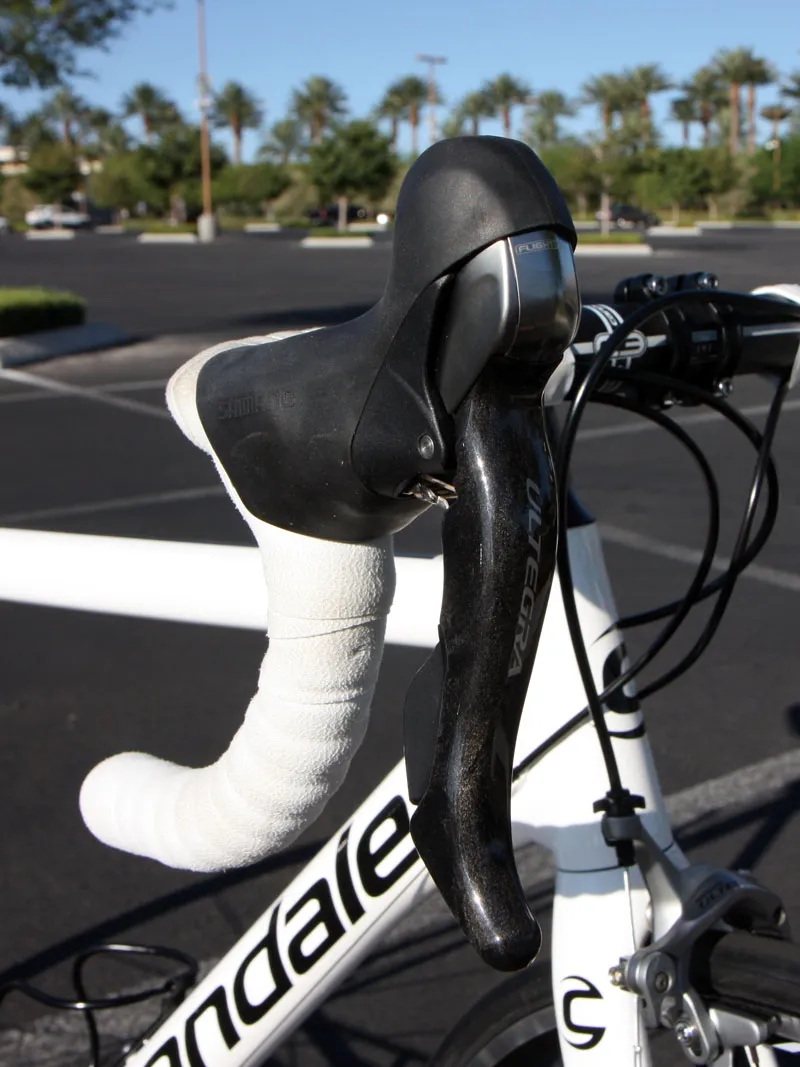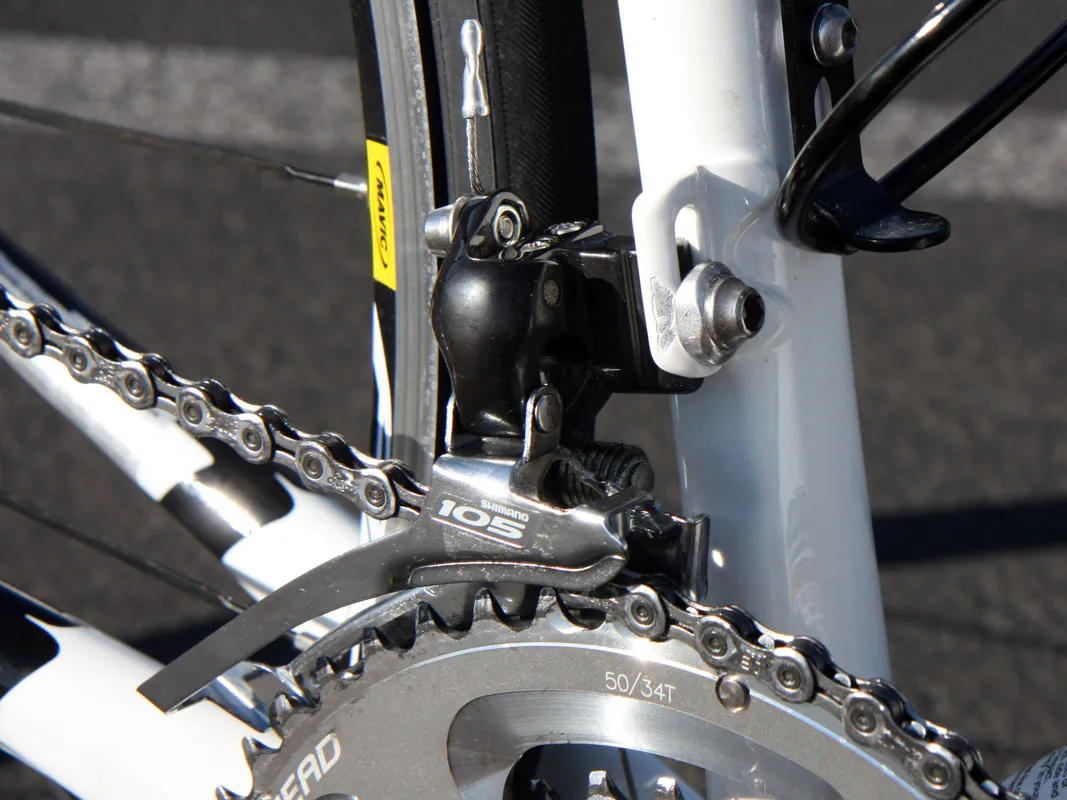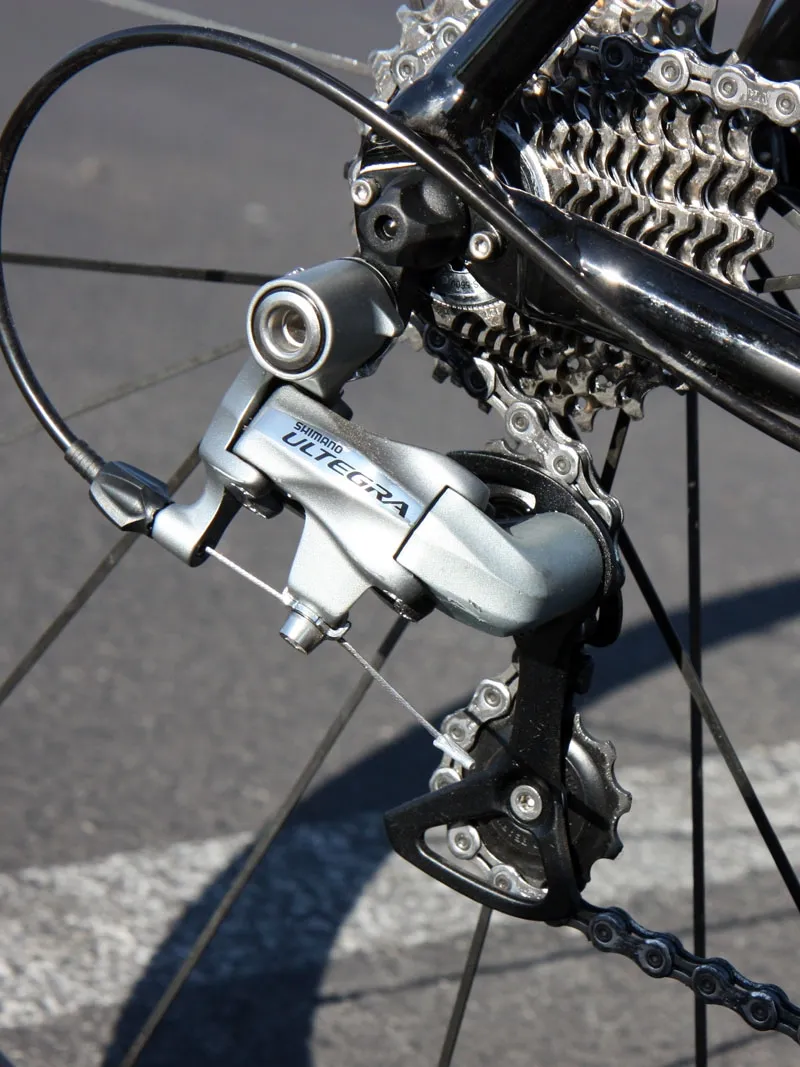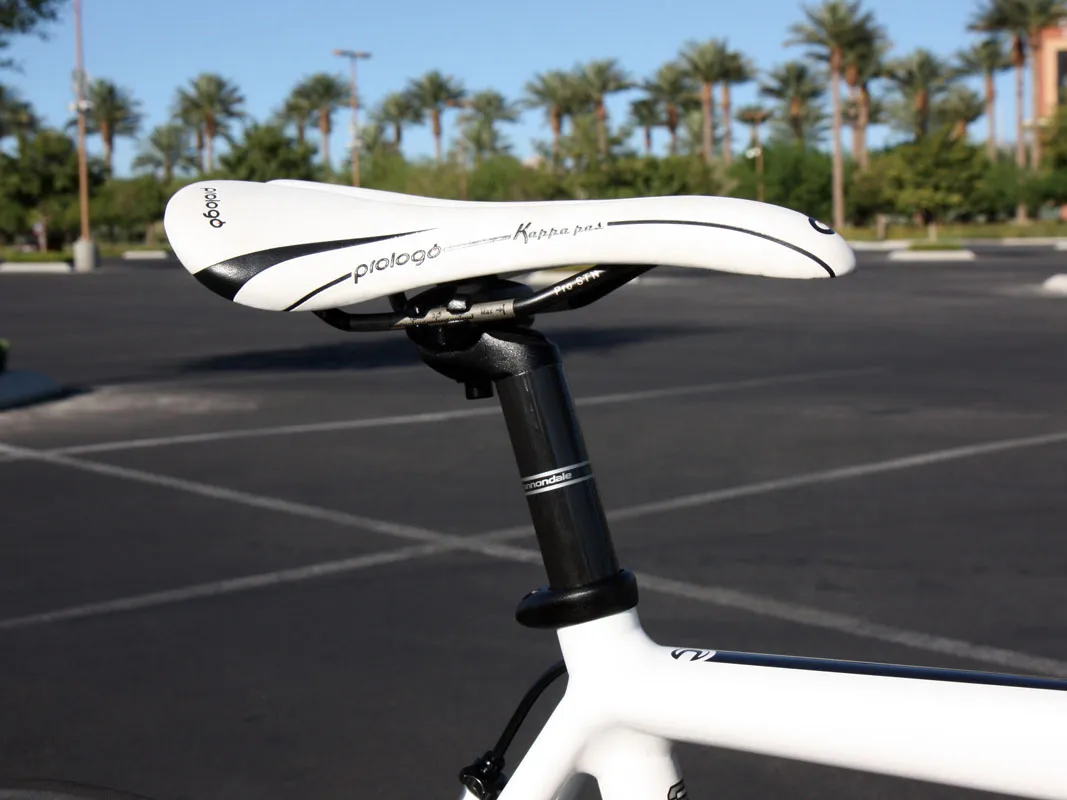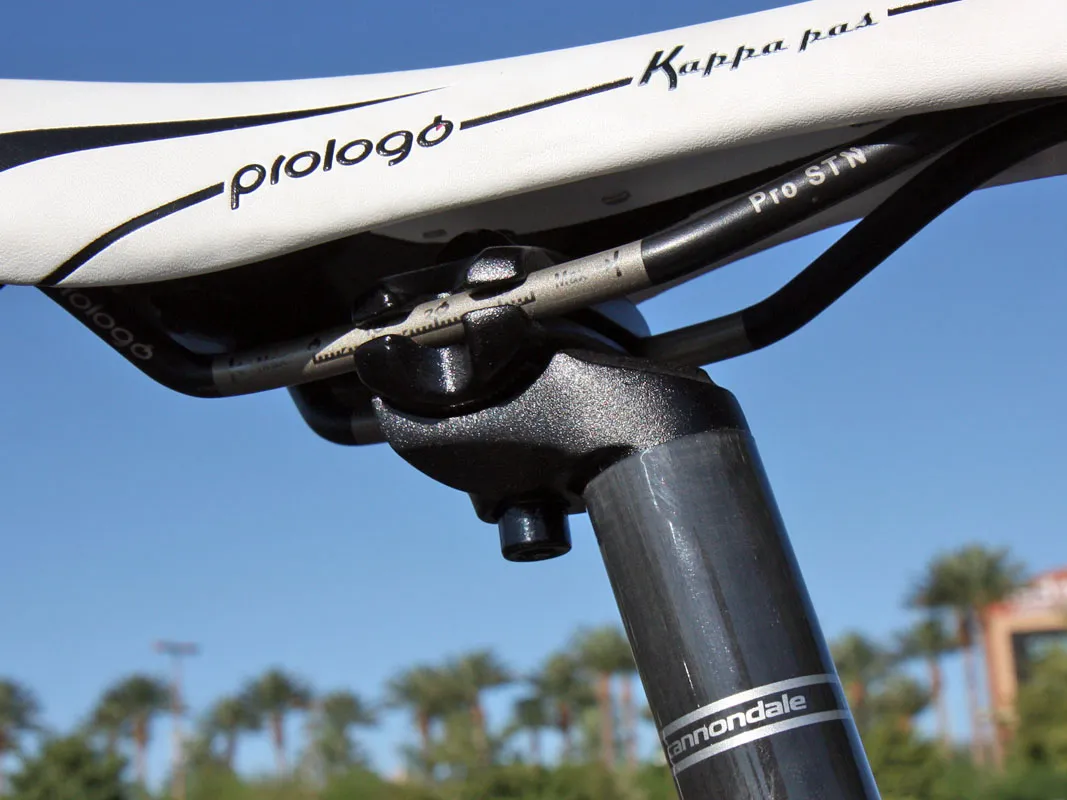Cannondale's cult classic CAAD9 aluminium road chassis gets a big bump in performance for 2011, and it's not just a modest refresh – the new CAAD10 is a wholesale redesign from top to bottom.
If our initial ride around the picturesque Red Rocks area west of downtown Las Vegas during this year's Interbike show is any indication, it'll surely continue to be a top pick for privateer racers.
Our medium-paced group ride quickly evolved into spirited mini-sprints up each successive rise and the CAAD10 is refreshingly devoid of vagueness when you mash on the pedals or yank hard on the bars.
Chassis stiffness is on par with many mid-level carbon frames we've ridden – and better than most entry-level ones – both in terms of pedalling efficiency and front triangle torsion, proving that it's better to have a more advanced example of a lesser material than a lesser example of a more advanced one.
Comfort-wise, the CAAD10 is certainly no old-school aluminium tooth rattler, with a surprisingly refined feel on the road while also doing a decent job of taking the edge off of obstacles like expansion joints and cattle grids (US: cattle guards).
Handling is retained from the well-sorted CAAD9, and is neither too quick nor excessively languid. Turn-in on the CAAD10 is appropriately quick and the chassis takes a solid set when attacking downhill corners, yet it's still stable enough to sit up and snap a few photos while casually rolling along at speed.
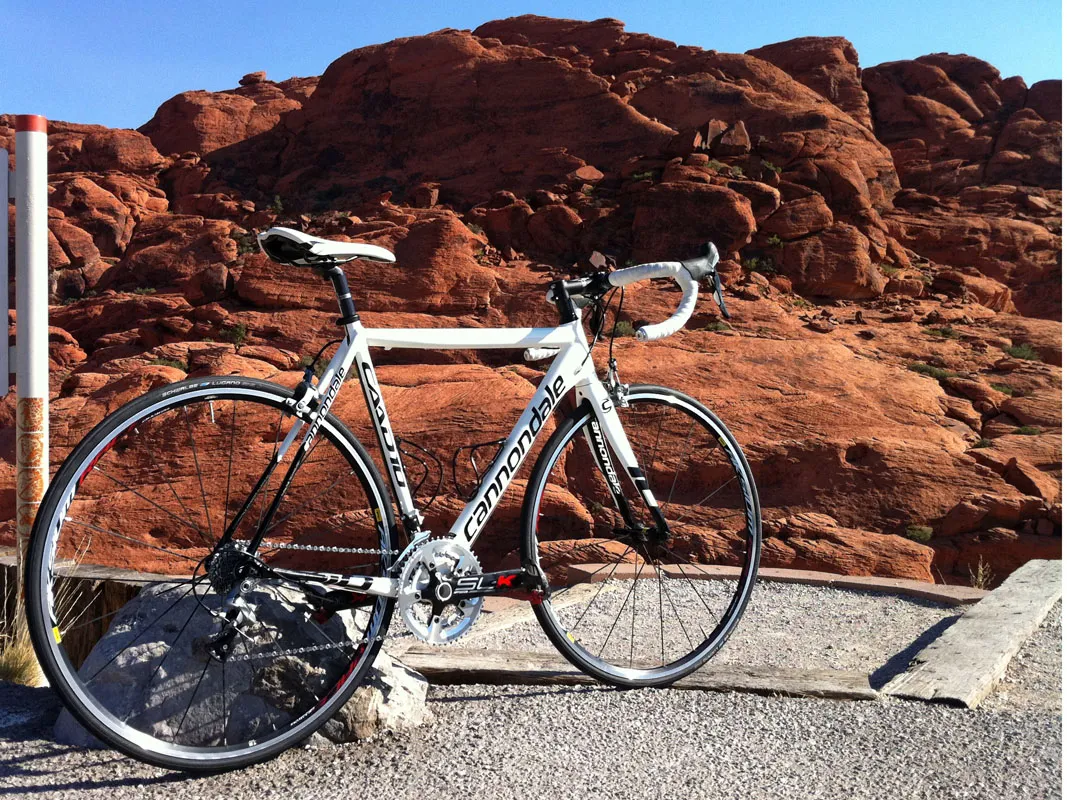
While most of Las Vegas is essentially flat, the Red Rock Canyon loop just west of town offers a surprising amount of climbing
Dedicated criterium racers may wish for something a bit more aggressive and casual riders might prefer a taller front end and more relaxed feel but for the majority of enthusiasts out there it should be just right.
Let's be perfectly clear, though: as advanced as the CAAD10 is, it's no SuperSix Hi-Mod. That flagship carbon chassis is still a bit more efficient under power, noticeably snappier when you torque the front end, lighter, and notably smoother both in terms of high-frequency vibration and bigger impacts – though we'll continue to extract more details as the months roll by on a long-term CAA10 tester.
However, especially given the claimed weight of just 1,150g for an anodised 56cm CAAD10 – nearly 200g (0.44lb) lighter than the CAAD9 – the performance gap has narrowed considerably. And at US$999, the CAAD10 frameset is less than one-third the cost of a SuperSix Hi-Mod.
Alloy chassis but carbon-like shaping
Despite the all-aluminium frame construction, the new frame shares much of its shape and design philosophy with the carbon fibre Flash hardtail – something Cannondale say was permitted by a switch from conventional 6061 alloy to the stronger and more formable 6069.
Starting up front, there's a newly tapered 1-1/8 to 1-1/4in head tube joined to a relatively constant-diameter (in contrast to the old Power Pyramid design of the CAAD9) hydroformed down tube with additional flaring to lend even more steering precision.
Adding to the CAAD10's extra stiffness is the slightly hourglass-shaped top tube – which is horizontally flattened at either end to combat side-to-side flex but not so much in the middle to avoid impinging on knock-kneed pedallers – and the so-called 'Delta' seat tube with its radically flattened profile at the milled-out BB30 bottom bracket shell.

Cannondale say the widely set seatstays and flattened top tube help keep lateral flex at bay
Back at the business end are asymmetrical chainstays – the driveside one is slightly rectangular and taller while the non-driveside is more rounded – plus tiny alloy dropouts with a resurrected sandwich-style hanger to provide a more solid foundation for finicky 10- and 11-speed drivetrains. Cannondale have ditched their long-standing hourglass-bend seatstays in favour of straight shots from end-to-end plus a trick hollow-forged bridge that's welded in between.
Most of the Flash-like shaping is found out back with the flattened seat- and chainstays and the especially widely set seat cluster. According to Cannondale – and seemingly reinforced by our initial test ride – this lessens side-to-side wag compared to the CAAD9 while also lending more flex on bumps.
The new carbon fork is nothing to sneeze at, either, with full-carbon construction right down to the dropouts and a respectable 390g claimed weight. In a nod to old-school frame design, Cannondale say the fork's extra rake helps provide a comfier ride, too, but it retains modern handling characteristics thanks to the rearwardly offset tips.
Definitely not 'vaporware'
The CAAD10 is available in a refreshingly broad eight sizes (48-63cm), with parts kits ranging from Shimano 105 to Dura-Ace, with a SRAM Rival build thrown in for good measure.
Lest you weren't already impressed by the frame-only price, get this: the top-end CAAD10 1 costs just $3,199 with a Dura-Ace transmission, FSA SL-K carbon cranks and Shimano RS80 wheels, while the 105-equipped CAAD10 5 is just $1,499 – and all are offered with either standard or compact cranks. The new CAAD10 models are already on Cannondale showroom floors.
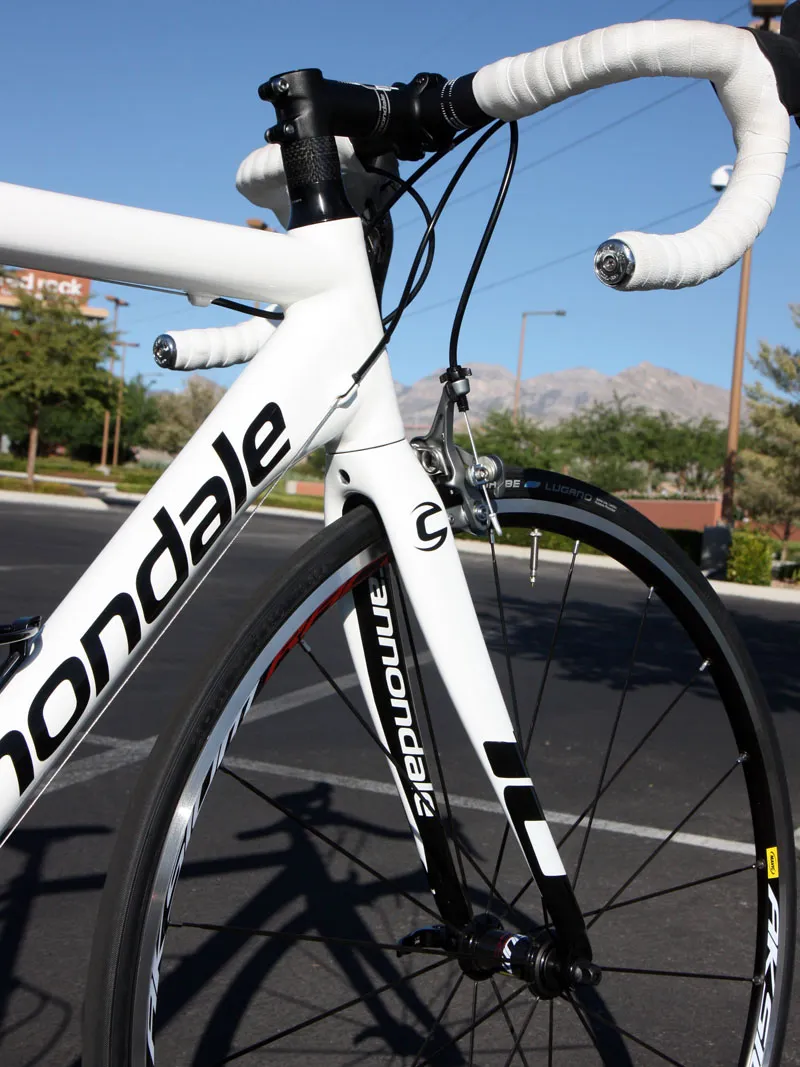
The CAAD10's matching all-carbon fork reportedly weighs just 390g


